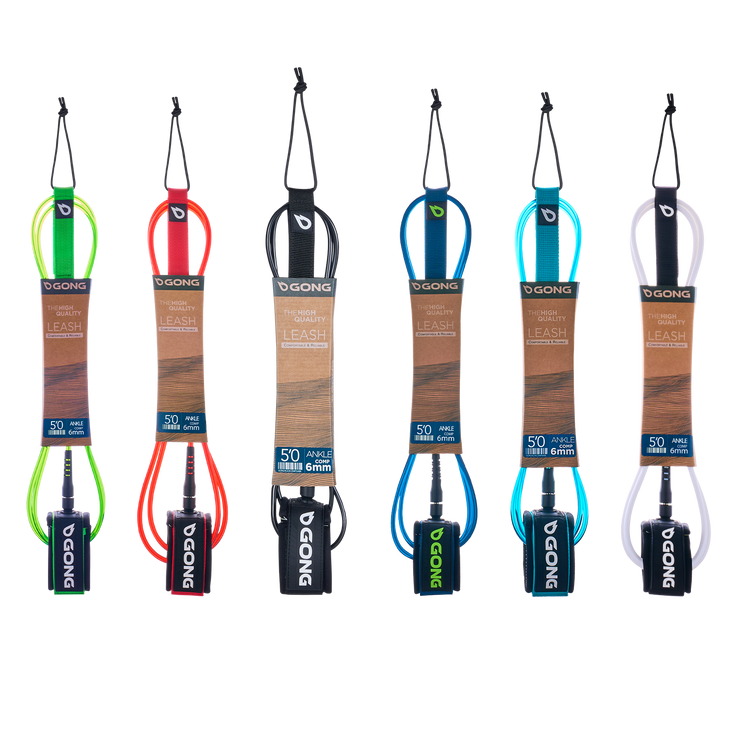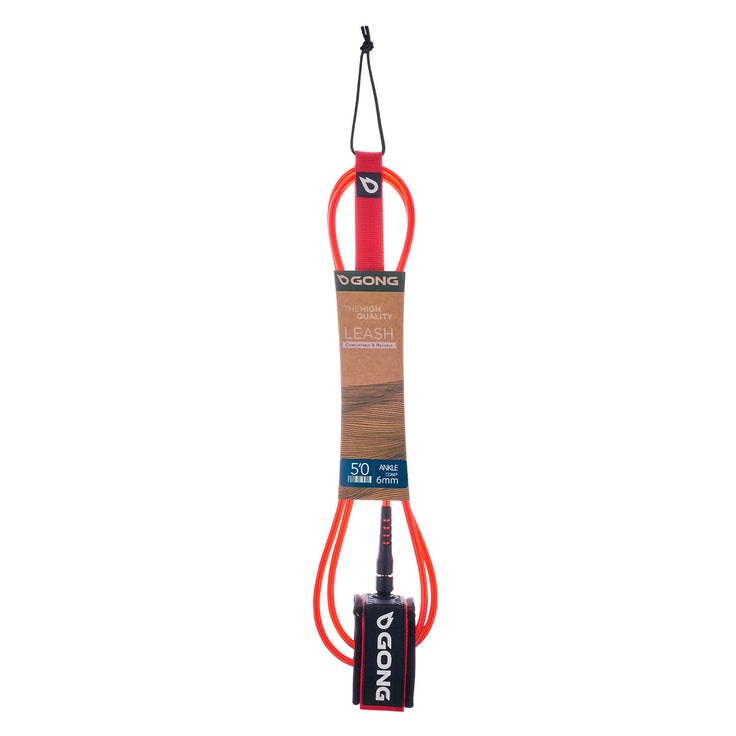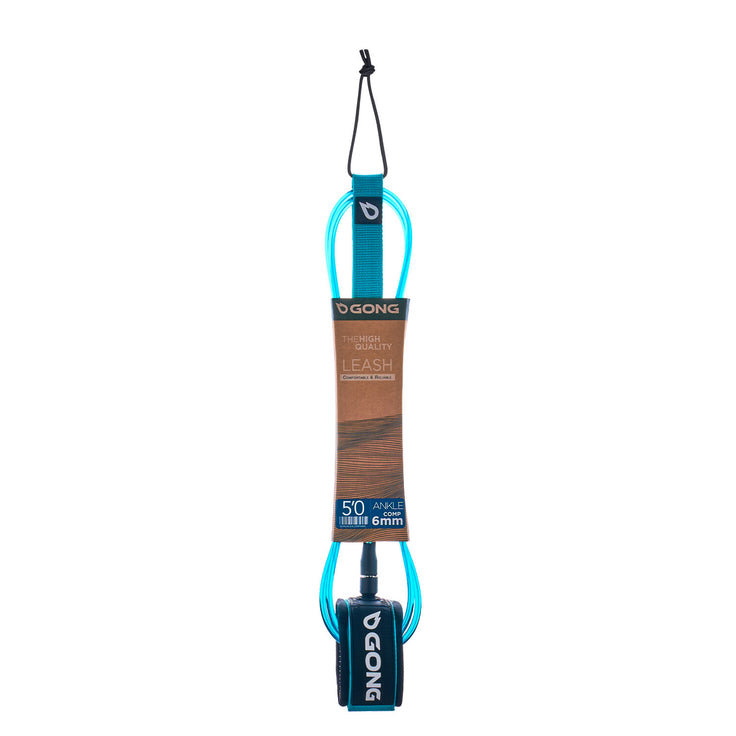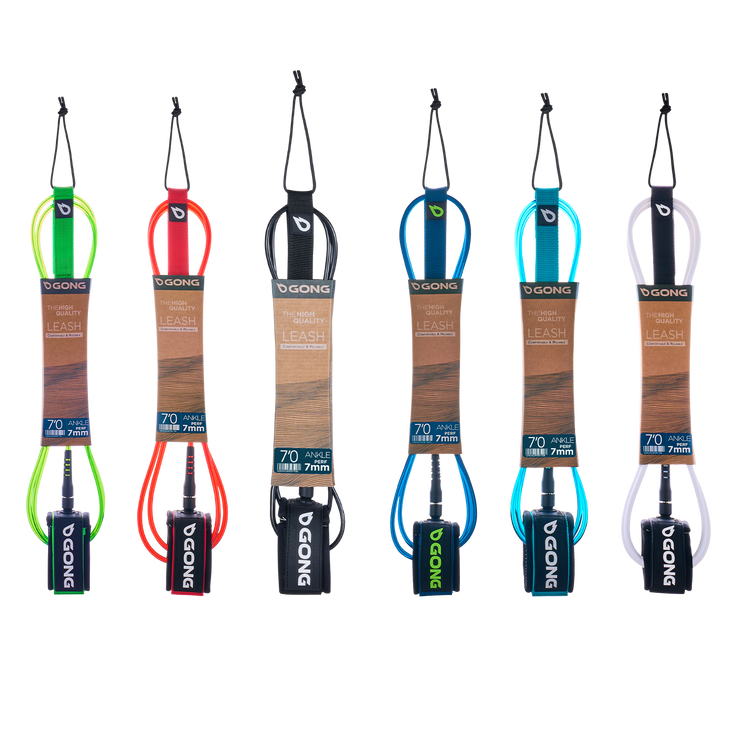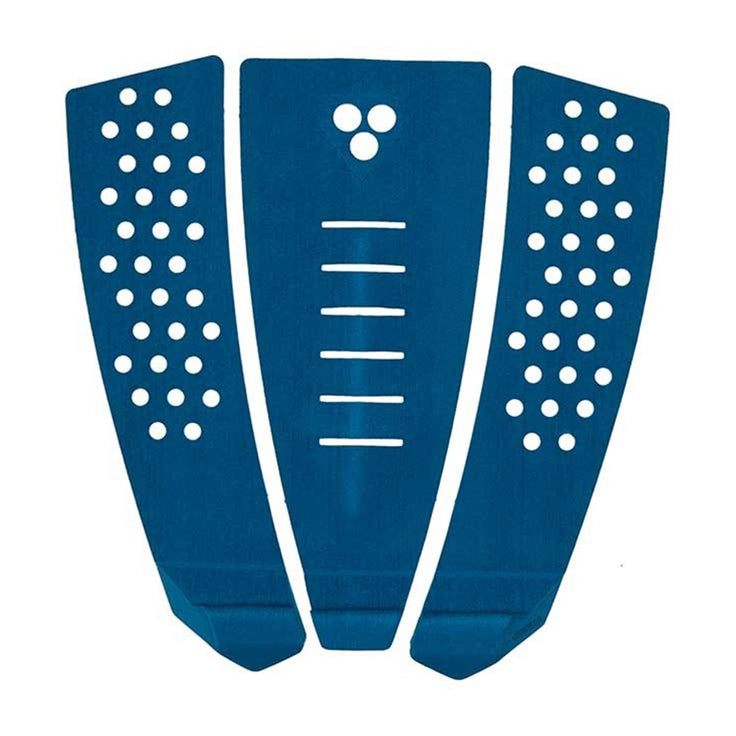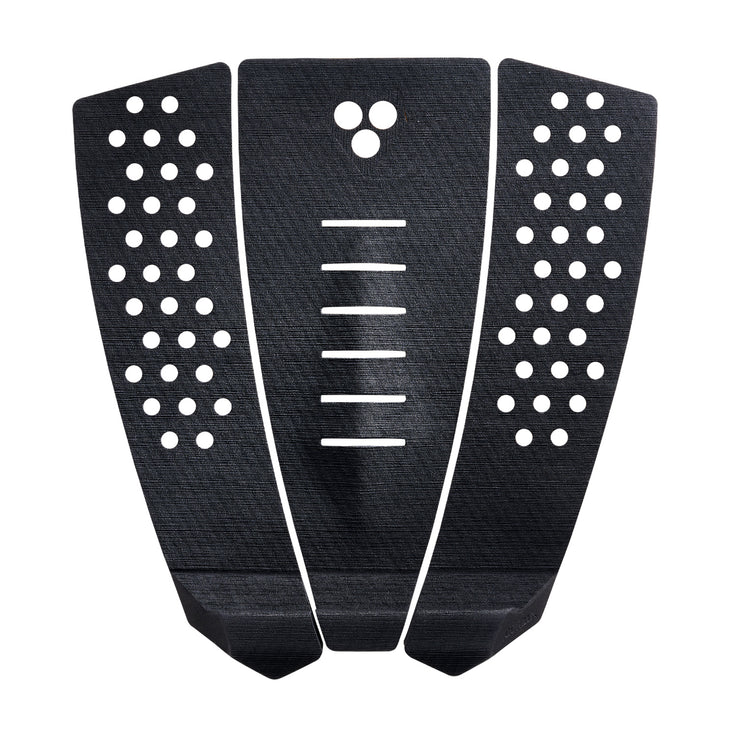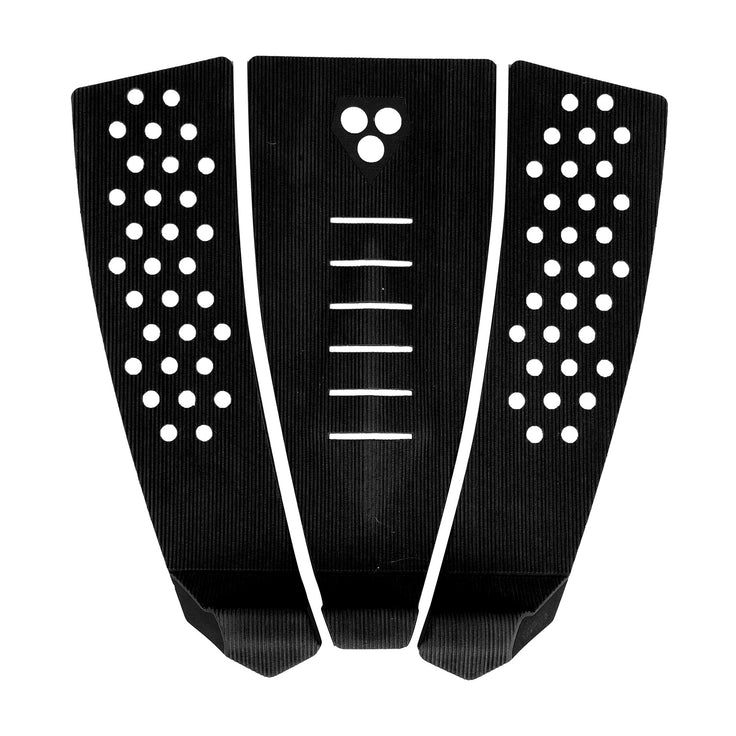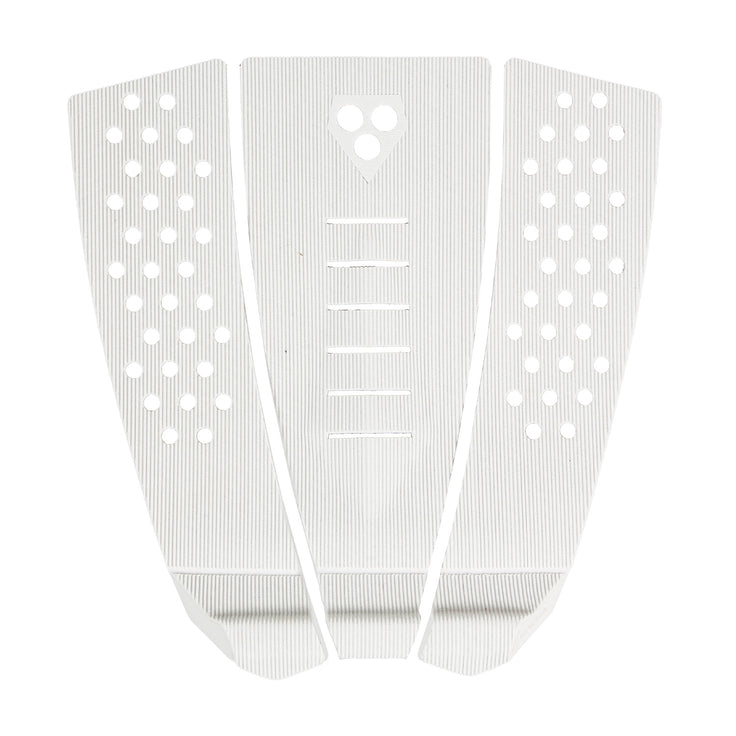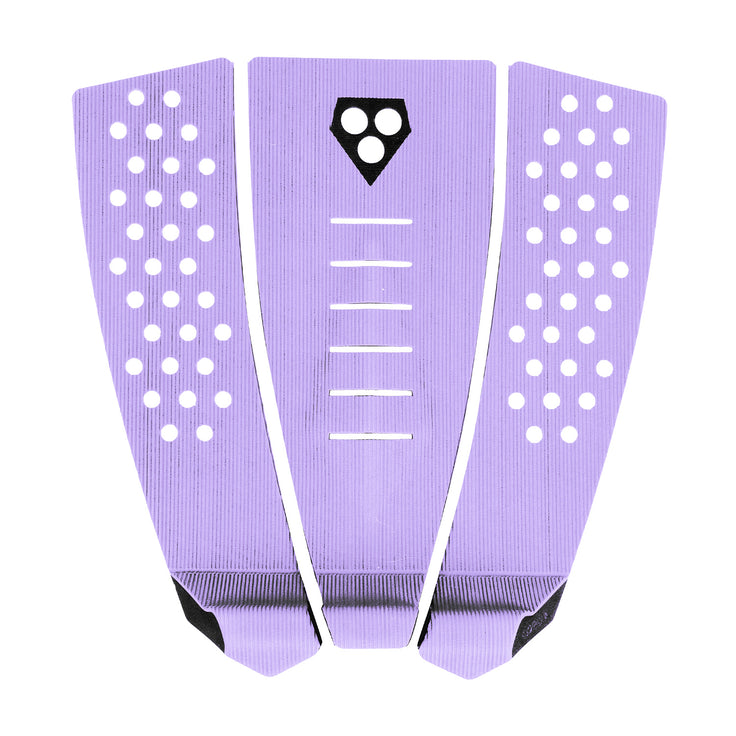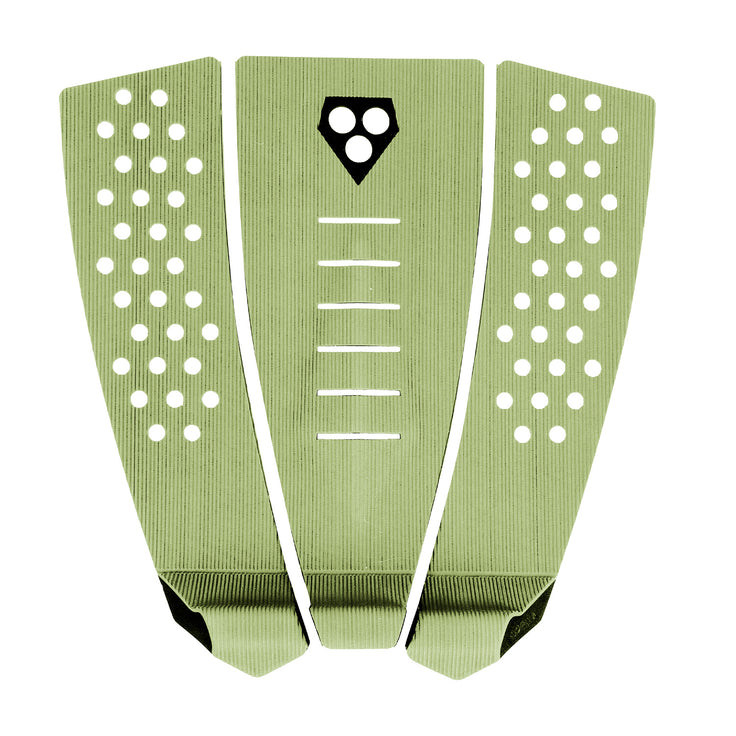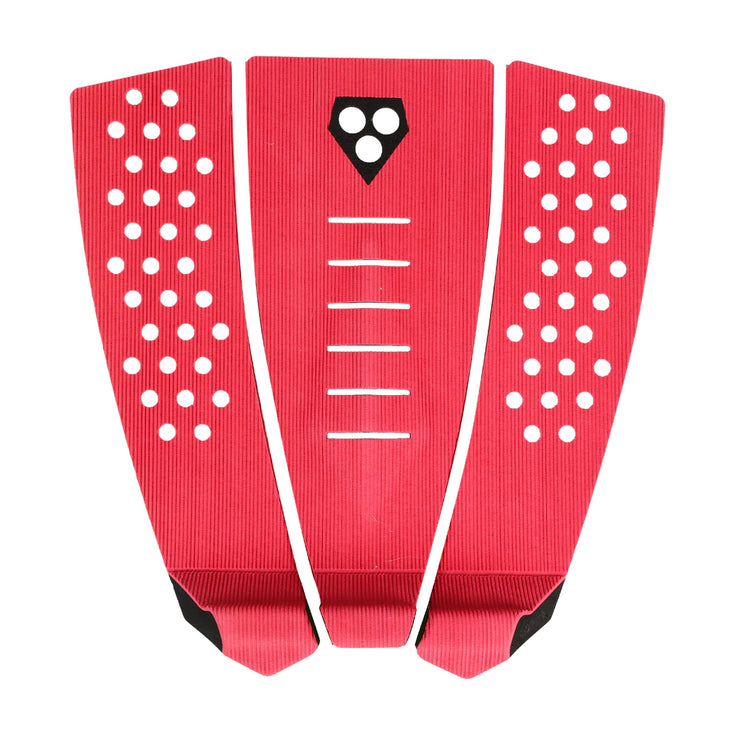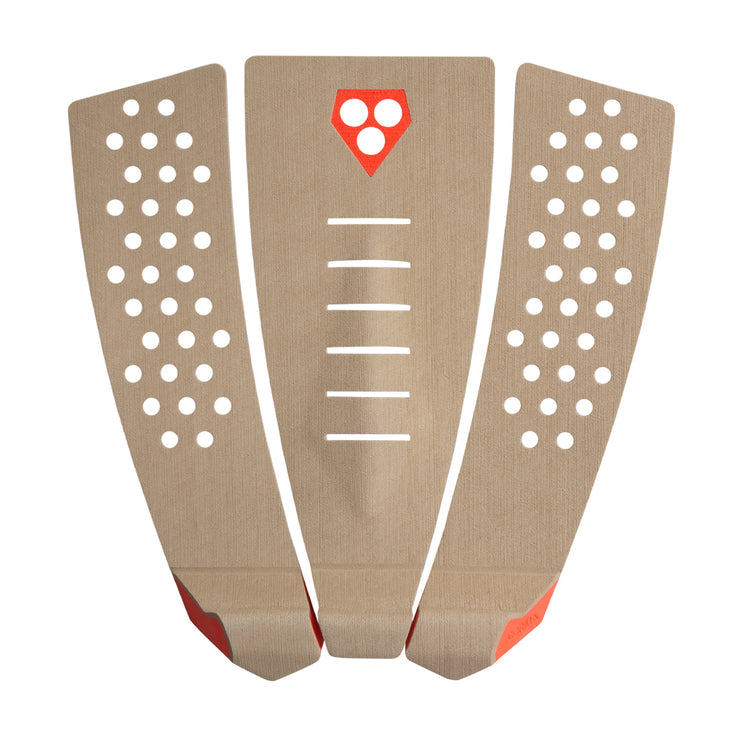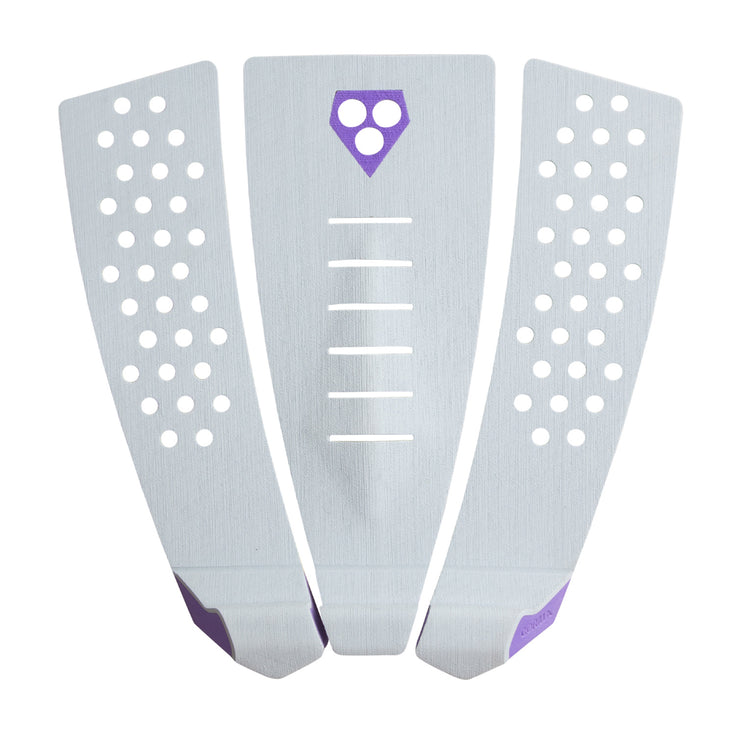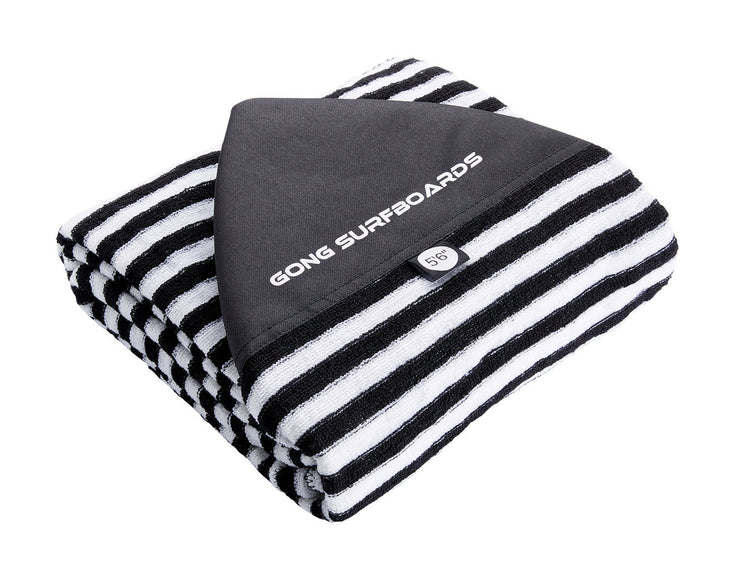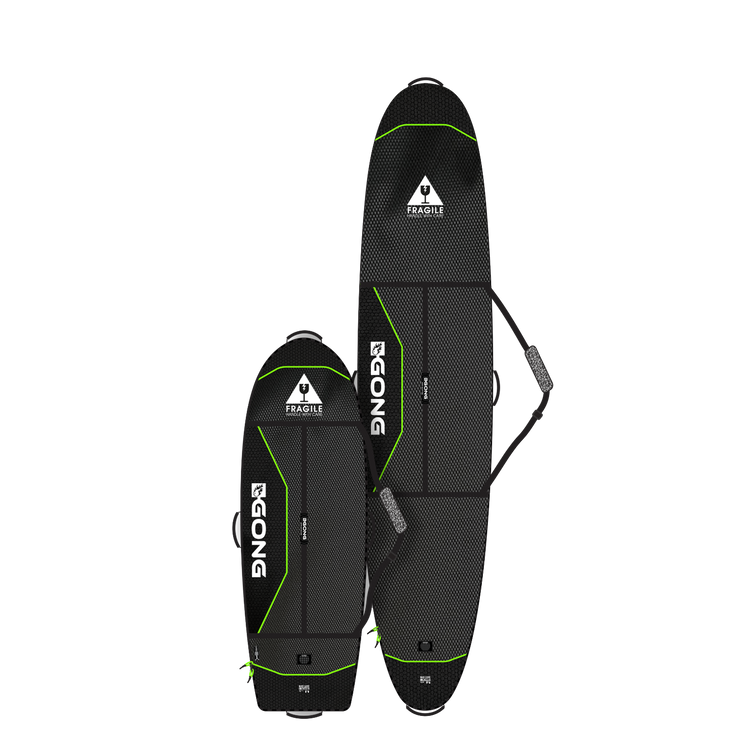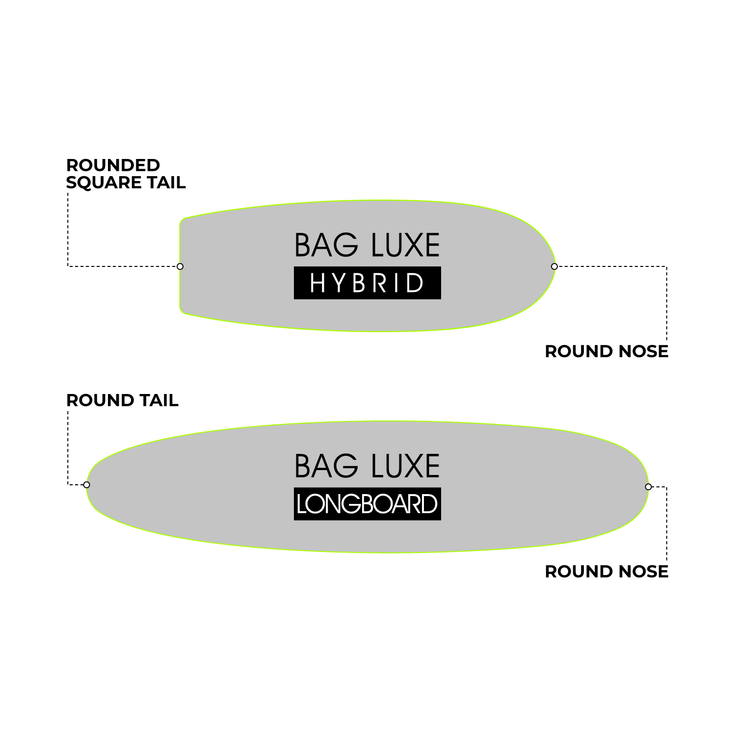Steve EPS Surfboard
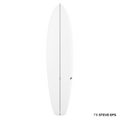

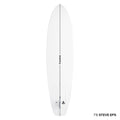
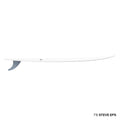
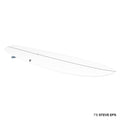
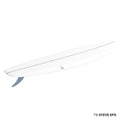
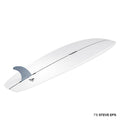
Program
The glide of the Steve is reminiscent of late seventies single fin boards with the perks and style of a mid-length.
Presentation
At first glance, the Steve is surprising, because its lines are far from conventional. A shape almost insensitive to current trends and influences. And yet this modern shape draws its lines from decades of surf history and culture. And if surfing is a way of expressing yourself, not going unnoticed is part of it, because the Steve asserts its originality loud and clear.
Feet centered on the deck, one hand dragging in the water, displaying a certain nonchalance, the Steve is made for flying down the line and making long turns on the rail.
The Steve is the antithesis of the modern shortboard: we don't pump, we don't go for tricks. In short, it is the opposite of skate influences. It’s a board on which you firstly enjoy the ride. It gets early in the wave, glides effortlessly and carves on the rail. In other words, it allows you to experience the essence of surfing.
You can obviously draw rounded lines, cut turns short with powerful carves, the Steve's surfing is incredibly complete. But what will make you think “wow” is a nice cheater hang five in the pocket for instance!
Having style in surfing is not just a question of how it looks, because it is also and above all a question of performance, the essential part of which lies in the ability to be fast and generate speed during maneuvers. The shape of the Steve is designed to facilitate this glide with its very low tail rocker. With this speed, all you have to do is to enjoy a naturally aesthetic glide.
OUTLINE
The outline is streamlined, the rounded nose is generous but not cumbersome, and combined with the advanced max width, the paddling comfort is absolute. The volume is comfortable but not excessively wide, so you can paddle quickly to the peak. You can fully enjoy the mid-length ability of catching waves easily.
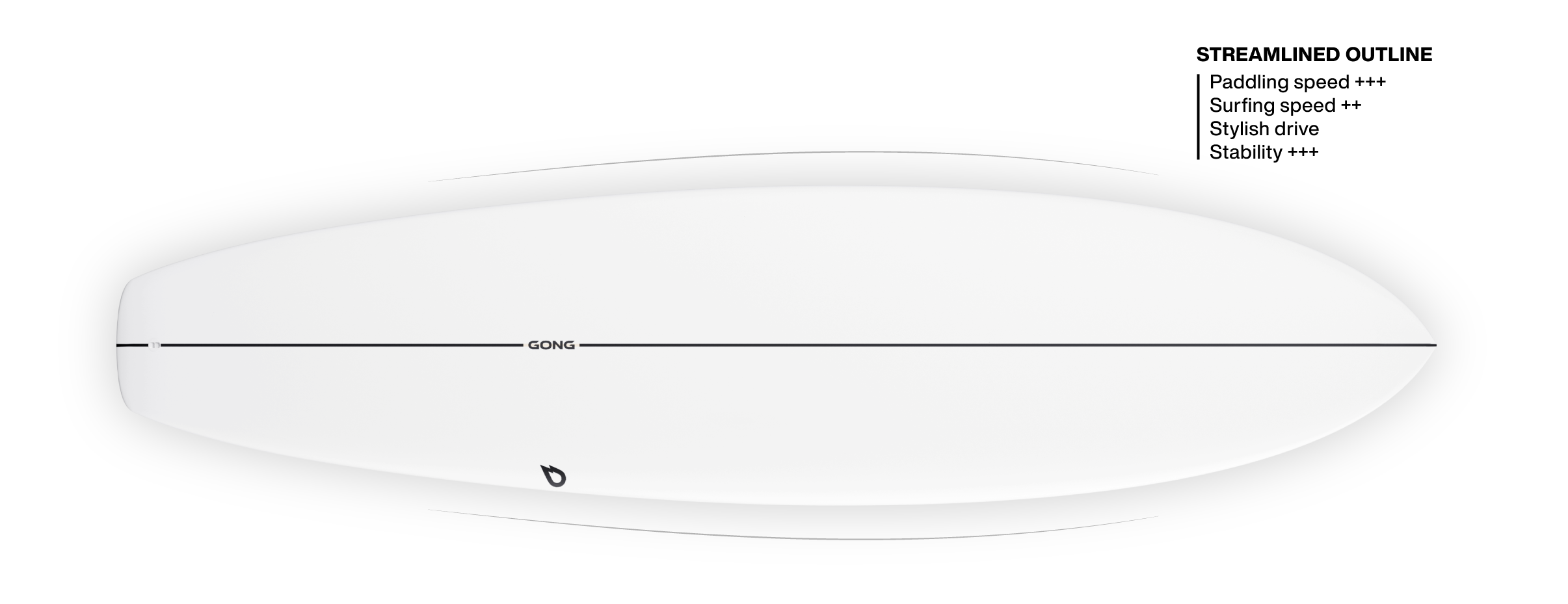
TAIL
The shape of the tail is the same as on most performance shortboards. The Steve's wide squash tail is simply scaled to its size, meaning it's wider to enhance its glide. You get lift for immediate acceleration, as well as stability and control.
On the other hand, the volume of the tail has been greatly reduced over the last ten centimeters to improve maneuverability. By removing any excess lift, we improve the Steve's behavior at high speed. The tail fits perfectly in the water and lets the single fin and channels do their job without excessive buoyancy.
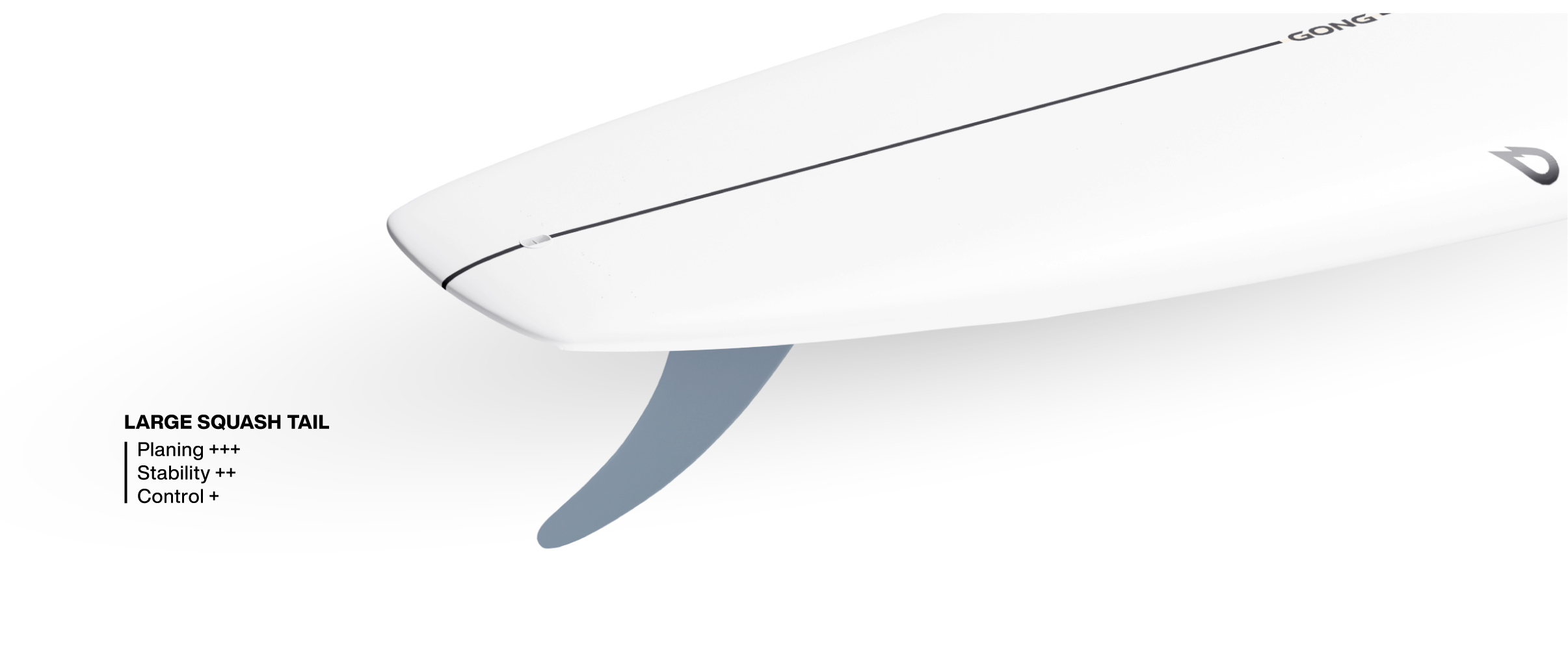
SINGLE FIN
This setup with a single fin is the very origin of modern surfing, in its simplest form. The pure glide of the single fin gives the board speed without having to shift gears. Because this is the setup that offers the least resistance and the least drag. Acceleration is both immediate and progressive, and the ride is smooth and easy.
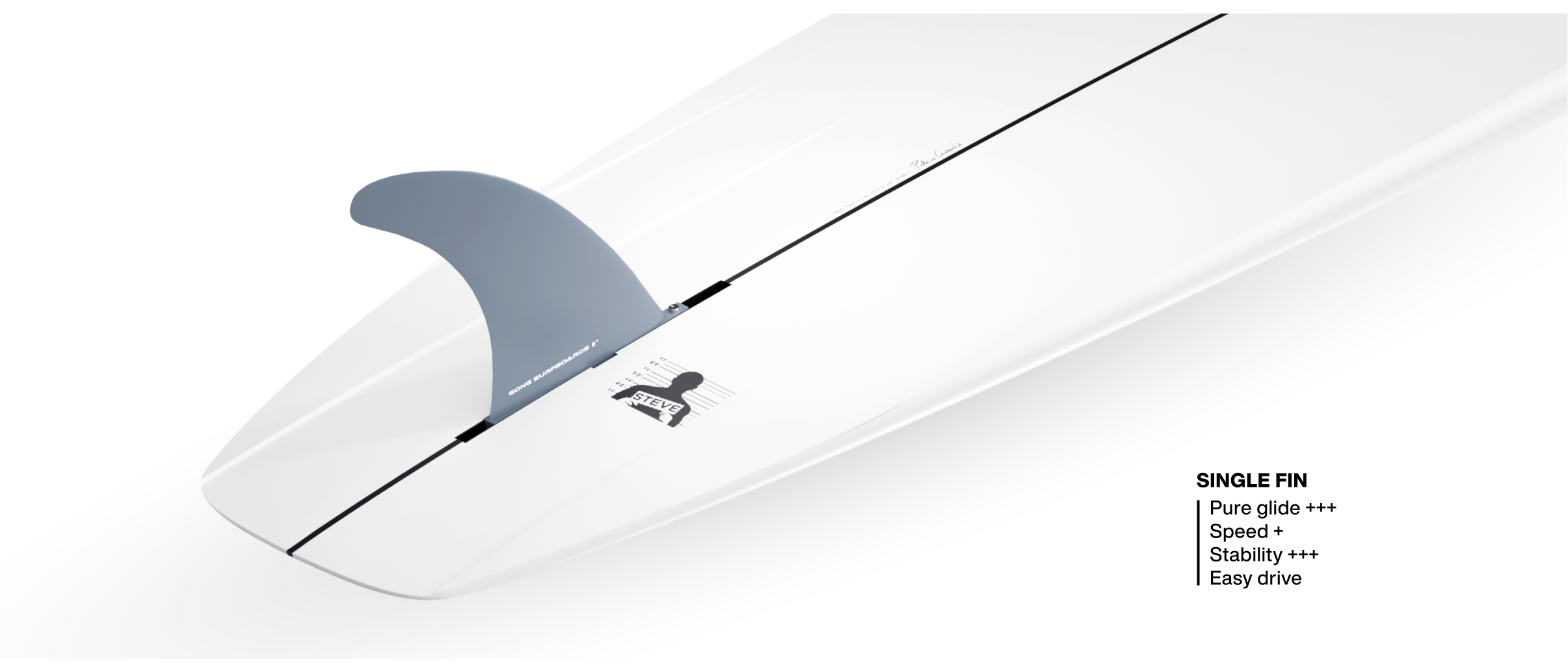
HULL
The channels aren’t too deep to just add a little more grip and character, without slowing the board down. This hull puts you perfectly in sync with the rhythm of the waves thanks to more control and a more precise drive.
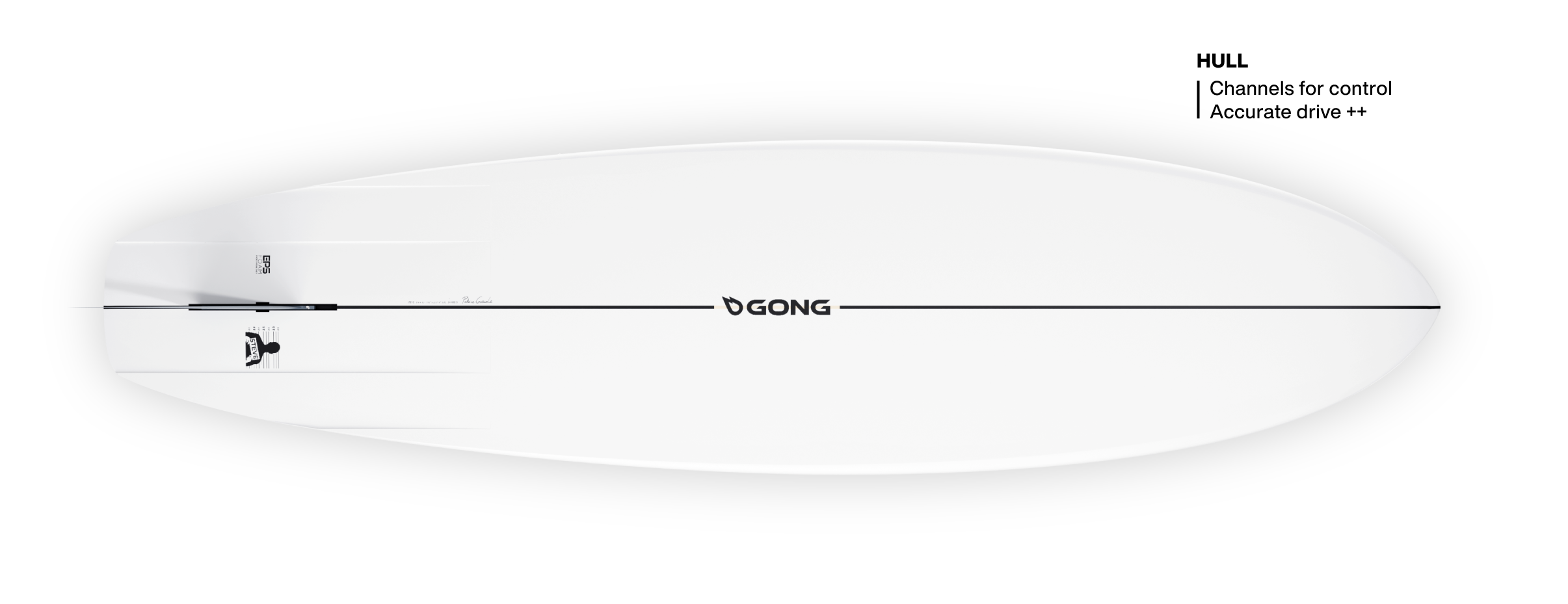
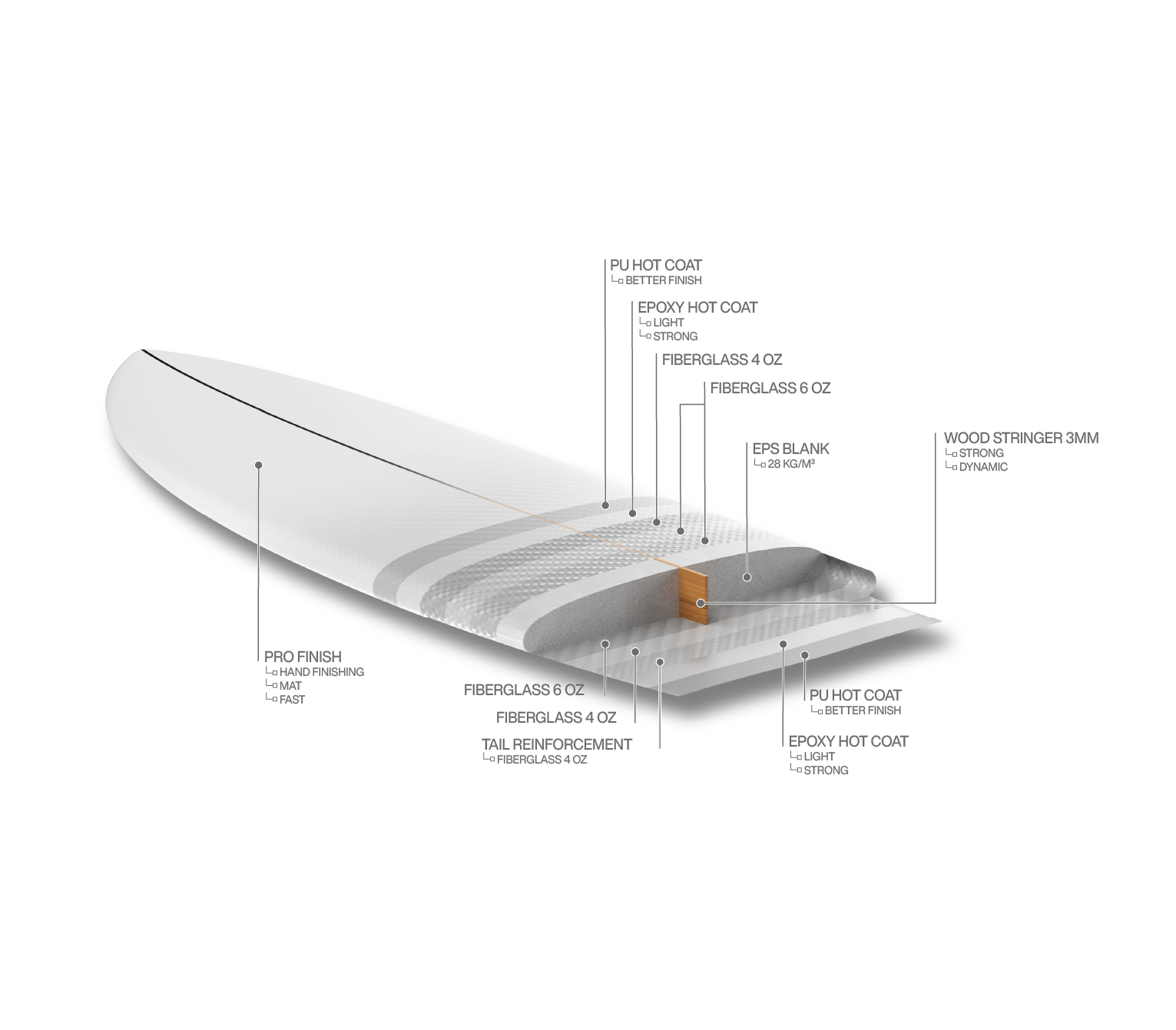
Technical sheet
Steve EPS Surfboard 6'6
Shape
- Rocker: timeless, tight to the tail and progressive for maximum glide.
- Rails: boxy on the tail for stability and rebound at the bottom of the wave, solid front rear for a smooth, forgiving feel.
- Volume: harmoniously distributed along the length of the board.
- Outline: streamlined for speed and paddling comfort.
- Tail: wide square tail for speed and glide.
- Nose : slightly rounded point nose.
- Deck: domed to maintain thin rails.
- Hull: flat nose, slight V in the center, double concave V with 4 channels on the last rear quarter.
- Fins: single, for pure glide.

Buying guide
For whom?
The Steve is designed for advanced surfers who want to get the most out of its special style.
A beginner or lightweight surfer will be able to use it by choosing a large size.
An intermediate surfer who's progressing and looking for a unique board with unrivaled style.
An experienced surfer who simply wants to make glide their ultimate priority.
And even if there are as many surfers as there are ways of surfing, the Steve brings together all those who want a pure ride, with a smooth, fluid surfing style.
For what ?
The advantages are numerous, ranging from the easy paddling and take-off to the mid-length's ability to sneak through a line-up and catch set waves very easily. But it's also a great board to ride tricky or challenging waves, the Steve is a real remedy against frustration.
This is a very forgiving shape, there's no need to pump like on a shortboard, or dance like on a longboard. You simply enjoy the Steve, and that's certainly what makes it the easiest board on which to really work on your style.
Its program makes it an excellent board for trips or simply for everyday sessions, because it will fit easily into most cars.
What size ?
The Steve is definitely a no hassle board so don't hesitate to choose a board with volume. When choosing a mid-length, we recommend a board 10" larger than your height for intermediate to experienced surfers. For a beginner to intermediate surfer, we recommend 12' or more.
A sporty beginner will choose the Steve in 7'6 and up according to his size, the length will help enormously to maximize the number of waves caught and boost his progress. The length will also be an asset in smaller conditions.
The table below can give you a few guidelines, to be adjusted according to your desires and your level.


The ideal waves for the board?
Sizing: from almost nothing to head high.
Power: it gives its best in normal waves.
Appearance: it goes everywhere but prefers smooth waves.
What technology?
We offer different technologies on certain shapes to meet the program, conditions, and sometimes individual habits.
In the case of a PU board, there will be a different behavior from an EPS board of the same shape and weight. It’s the weight distribution in the board that generates a big difference in feeling. For two blanks with the same shape, one in PU and the other in EPS, the EPS blank will be lighter, as EPS foam is less dense.
In the case of a PU board, it’s the blank that provides solidity and concentrates weight in its core. The board thus has a very “central” inertia. This makes for a very smooth board, which forgives errors but is less dynamic. The PU blank will be heavier than the EPS blank.
In the case of an Epoxy board, the blank is very light, and solidity comes from the skins. So the inertia is “peripheral,” meaning the weight of the board is on the outside, making it more mobile, agile, and dynamic.
The best comparison to explain these differences would be to say that the inertia of PU naturally gives a single fin feeling (very centered, smooth and soft pressure), while EPS gives a trifin or even quad feeling (very external support, immediate rail to rail, maximum nervousness).
EPS is generally preferred for boards that need dynamism, usually in small to medium conditions, schematically in waves where speed generation is required. EPS is therefore preferred on shapes where reactivity is sought, as it’s easier to turn quickly, perfect for waves that require rapid transitions. For very good surfers, this further enhances the dynamism of their surfing. For progressing surfers, EPS adds this little boost of dynamism as the board can gain speed much more easily, an important point considering that in surfing, speed is the key to everything. PU is favored for high-performance shortboards, for boards where controlling speed is the main objective.
Different feelings : Surfers accustomed to PU will generally say that “EPS bounces and feels stiff.” While surfers used to EPS will say that “PU feels soft, lacks response, and struggles to accelerate.” These feelings often stem from habits, sometimes generalities, and often prejudices. Don’t hesitate to deviate from conventional wisdom to make your choice.
What type of fin?
You might think that a simple single fin set-up would narrow down the field of possibilities, but there are as many different feels as there are fin shapes, and when you consider that a fin accounts for almost 50% of a board's character, it's a good idea not to overlook this point. To choose the fin best suited to your surfing, conditions and style, you need to understand how each of the parameters that make up the shape of each fin will influence the board's behavior.
The rake
The rake is the rear curvature of the fin. It's the distance between the end of the base and the end of the fin's trailing edge (ear). The greater the rake, the closer the tip of the fin will be to the tail of your board. Ideal for experienced and powerful surfers who want to make long turns with maximum grip and drive. Drive is the ability to hold a trajectory while maintaining speed. A fin with a wide base will help maintain this speed, while a fin with a shorter base will offer less. Recommended for more powerful waves.
On the contrary, the less rake (straighter fin), the greater the pivot. The pivot is the ability to make more or less tight turns. Ideal for tightening carves and turning short, so ideal for exploiting waves that lack power. Imagine yourself at the helm of a catamaran with the rudders down, the boat will turn short and you won't need much pressure to operate the rudders. But raise these rudders blades to a 45° angle, in which case it will be difficult to make it turn short, and you'll need a lot more power.
The base
The base is the lower part of the fin. The part in contact with the board. A long base brings more control and ample carves. Ideal for powerful waves where you're looking for more hold and stability in turns and trajectories. A short base will provide more pivot and allow you to tighten your turns and free the tail. This is the fin of choice in slow waves, where maneuverability is more important than control. The longer the base, the more control and wide turns the fin will offer, the shorter the base, the more pivot, max speed and tight turns the fin will offer.
Depth
Depth is the height between the base and the tip of your fin. The deeper it is, the more stability and hold you'll gain, especially in powerful waves. A shallow fin will have less friction with the water, giving you more speed. This shallow depth also frees up the tail of your board. This type of fin is recommended for light conditions.
Surface
A fin with a large surface area provides more control. This type of fin is recommended for beginners, as it also provides greater stability. A fin with a small surface area provides more freedom under the rear foot. The board will be more playful.
Surface distribution: In fast, shallow conditions, you'll want to choose fins with a thin head and little surface area at the top, which will foil less and therefore accentuate carves less. In slow-moving conditions, you'll want a larger head area to accentuate maneuverability.
Flex
A fin's flex determines its ability to deform and return to its original shape. A fin with flex provides softer support and is more forgiving of errors. On the other hand, a fin with less flex, i.e. more rigidity, will provide more control, more responsiveness and more power. Reserved for the most experienced surfers, these fins require the surfer to be very precise in his trajectories. The deeper and thinner the fin, the greater the possibility of flexing.
In a US rail, the fin can be set either forwards or backwards. The further forward the fin, the more maneuverability, but at the expense of control. The board becomes "crazy" and will turn more than you want it to. The further back the fin, the less maneuverability, but the more control. The board is on a rail, very steady, but harder to turn, almost asleep.
It's up to you to find your "sweet spot": the right setting depends on the shape of the board, the shape of the fin, the conditions and, above all, your surfing style! Your size, your stance and your support transfers in carves can change everything. So don't hesitate to try out different placements until you find the one that suits you best.
Which shape to choose?
Steve or Batmob?
The main difference will be in the drive, with radically different, not to say opposite, fin set-ups. The Steve, with its thin single, will benefit from almost instantaneous, effortless acceleration, whereas you'll need to get the quad of the Batmob going. The single will give you wide carves, whereas you can cut turns short more easily on a quad.
The Batmob quad will offer more lateral support and great stability, while being more forgiving of placement errors on the wave thanks to its ability to accelerate. Where the single will require more precise placement and driving.
The Batmob is a hybrid board designed to get close to the feel of a shortboard with an evolutionary character. The Steve delivers a unique, pure riding experience.
Steve or Gumball?
There are many similarities to be found in the previous comparison. The quad-mounted Gumball will accelerate less quickly, but it will be much easier to generate speed in soft waves. For the same size, the Gumball will be several centimetres wider, yet more voluminous. For a lighter rider, paddling the Steve will be easier and faster, with a less rounded nose.
Steve or Acidolly?
The more longboard-like outline of the Acidolly makes it particularly stable in larger sizes, making it the board of choice for beginners and progressing surfers. So if you're a beginner with a hesitant take-off, the Acidolly will be more reassuring and stable.
The Acidolly is more reminiscent of a longboard, as its outline takes up the lines of a longboard, but is simply more compact. For the same size, you'll paddle the Steve faster, so it will get in the wave a little earlier, and it will hold up better on hollow slopes with its nose, which grips less.
You'll have plenty of time to put a nice cheater five on the Steve's nose, but nose maneuvers won't go any further, unlike the Acidolly, with which the longboard repertoire is more open.
Which boardbag ?
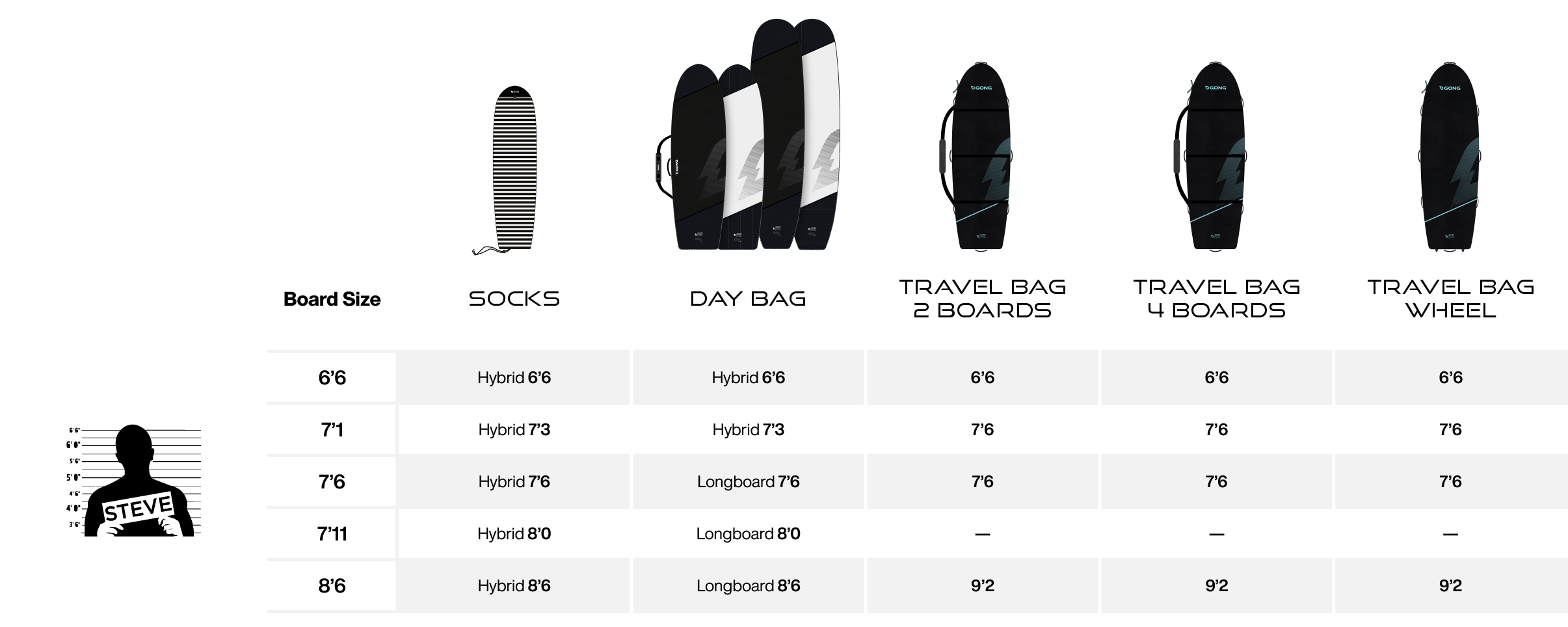
Equipments
- These boards are equipped with a leash plug, a US fin box and a US GONG sinlge fin.
- 1 US central fin box for all types of mounting.
- 1 US GONG Full Fiber 8" single fin.
- Concrete Fixed Plug at the tail so you never lose your board.
Delivery
Delivery time
We indicate a preparation and shipping time of 3 working days. In reality, the majority of orders are shipped within 24/48 hours.
The delivery time, i.e. delivery time of the package to your home, then depends on the delivery location and the carrier.
We work with reliable and efficient carriers. 99% of shipments go perfectly and quickly. In the case of the remaining 1%, rest assured that we will do what is necessary with the carrier.
Shipping fees
Unlike other sites, shipping costs are not hidden behind the price of our products. You know exactly what shipping costs you, and you are not disadvantaged if you choose to collect your order at our GONG Space Center.
Shipping costs are calculated based on the weight and volume of each package, and your delivery address.
Tracking your package
Delivery tracking is managed directly by the carriers to whom we have entrusted your packages. They will contact you by email or SMS to allow you to choose delivery methods and follow the route of your package.
Carriers
We work with the best transport societies to deliver to you throughout Europe and the world within very short deadlines. We chose them for their quality of service and their compliance with deadlines.
For mainland France, 80% of your orders arrive at their destination in less than 48 hours of processing.
For Europe, delivery times vary from 3 to 6 working days, depending on the country of destination.
For the rest of the world, delivery times depend on transit time and customs clearance time. This delay depends on customs and can last from a few days to a few weeks depending on the destination and seasonality.
Please note, transport time is added to preparation/shipping time. Two companies collaborate on your order (GONG and the carrier). Each one masters its activity and is committed to optimizing its deadlines so that you are delivered as quickly as possible and at a reasonable price.
Eco-responsible packaging
Preserving the environment is an absolute priority. This is why we do everything possible to reduce our ecological footprint.
The most important thing is to sell quality, durable products that will be repairable and will please you for a long time.
For our shipments, we use:
Scotch craft paper.
Final packaging in high-end cardboard.
For rigid boards: Flexi-Hex, very high resistance ecological packaging.
This means:
Reusable and recyclable packaging.
An almost total reduction in single-use plastic.
Maximum protection and impact resistance for rigid boards thanks to the innovative Flexi-Hex honeycomb design (35mm thick).
Receipt of your product
Upon delivery, check the condition of your package in the presence of the carrier. A complete explanation email on the procedure to follow will be sent to you when your order is shipped.
Despite our requirements and all the care we take in the packaging and protection of your product, transport hazards may occur, and your product may suffer more or less significant transport damage.
Note that the products are protected in their carton. If you have any doubts, simply refuse delivery and contact us.

























